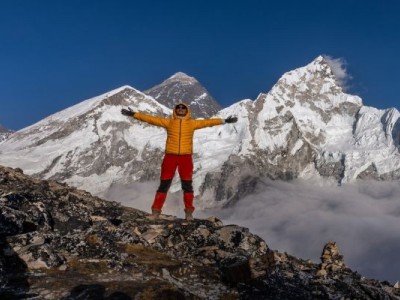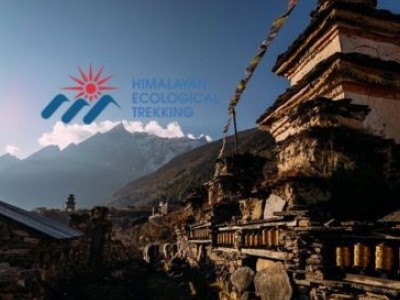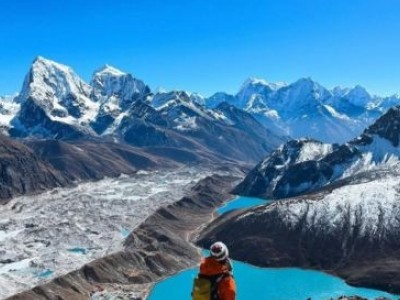Why Choose the Manaslu Circuit Trek in Summer?
The Manaslu Circuit Trek in Summer transforms the entire landscape into a lush paradise. While most trekkers avoid the monsoon season, adventurous souls discover the magic of walking through emerald forests and blooming rhododendron valleys. The summer months bring a unique charm that winter treks simply cannot match.
During the Monsoon Trek in Manaslu Circuit, you experience Nepal's eighth-highest mountain in its most vibrant state. The trails come alive with cascading waterfalls, verdant terraces, and crystal-clear mountain streams. Local communities welcome fewer visitors during this season, offering you authentic cultural experiences and genuine hospitality.
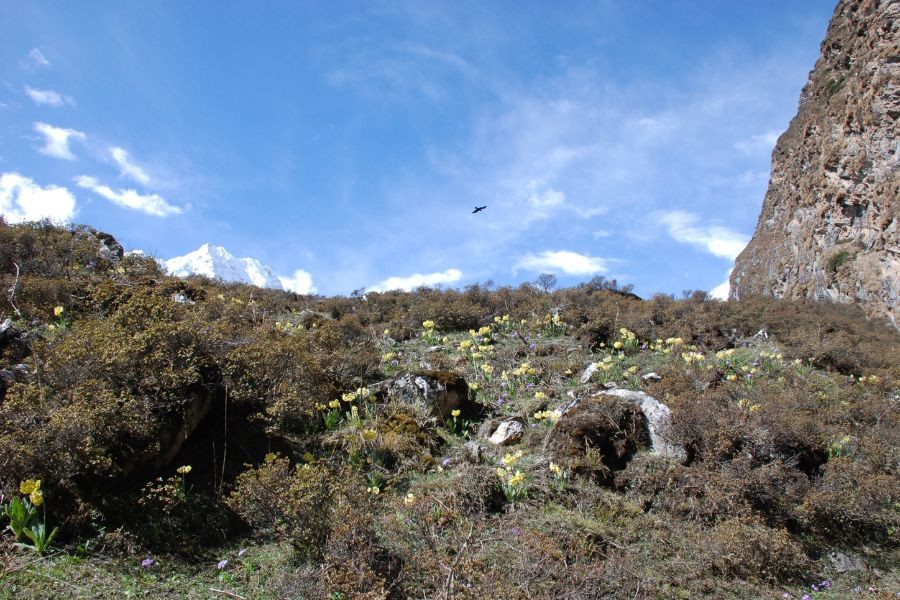
Weather Conditions: What to Expect During Manaslu Circuit Monsoon Weather
General Summer Climate (June-August)
The Manaslu Circuit Monsoon weather creates moderate temperatures with refreshing rainfall patterns. Unlike other regions in Nepal, the Manaslu area falls partially in a rain-shadow zone, receiving less intense rainfall than eastern trekking routes.
Temperature Ranges:
- Daytime temperatures range between 15°C and 25°C (59°F to 77°F).
- Nighttime temperatures range between 5°C and 15°C (41°F to 59°F).
- High-altitude areas: Cooler temperatures with possible frost
Trail Conditions:
- Muddy sections require careful navigation
- River crossings become more challenging
- Some landslide-prone areas need extra caution
- Lush vegetation covers most trail sections
Month-by-Month Guide for Summer Trekking
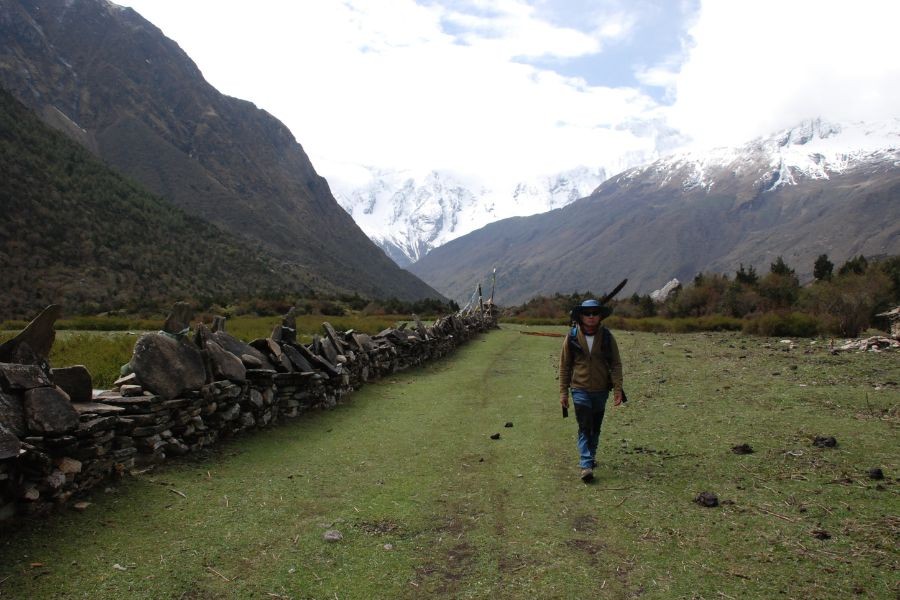
Manaslu Circuit Trek in June
The Manaslu CircuitTrek in June offers the gentlest introduction to monsoon trekking. Early June presents relatively dry conditions with occasional afternoon showers. The trails remain mostly accessible, and temperatures stay comfortable for walking.
June Highlights:
- Mild weather with manageable rainfall
- Fewer crowds mean peaceful trail experiences
- Rhododendrons bloom at higher elevations
- Local festivals celebrate the harvest season
Manaslu Circuit Trek in July
The Manaslu Circuit Trek in July brings peak monsoon conditions with more frequent rainfall. This month challenges trekkers with wet trails but rewards them with the most spectacular scenery. Waterfalls reach their maximum flow, and the entire circuit sparkles with fresh greenery.
July Characteristics:
- Daily rain showers, usually in the afternoons
- Trails become muddy and slippery
- Maximum water flow in rivers and streams
- Vibrant wildflowers bloom throughout valleys
Manaslu Circuit Trek in August
The Manaslu Circuit Trek in August marks the transition period when rainfall begins decreasing. Late August often provides clearer skies and improved trail conditions while maintaining the lush monsoon beauty.
August Advantages:
- Reduced rainfall compared to July
- Clearer mountain views become frequent
- Trail conditions gradually improve
- Perfect time for photography enthusiasts
Best Time for Manaslu Circuit Trek in Monsoon
Optimal Timing
The best time for Manaslu Circuit Trek in Monsoon depends on your experience level and weather tolerance. Each month offers unique advantages and challenges.
Recommended Periods:
- Early June is ideal for beginners in monsoon trekking.
- Mid-July is ideal for experienced trekkers seeking adventure.
- Late August: Best compromise between scenery and trail conditions
Seasonal Transitions
Understanding seasonal patterns helps you choose the perfect timing for your monsoon adventure.
Transition Periods:
- Late May to Early June: Gradual increase in rainfall
- Mid-August to September: Decreasing precipitation
- September to October: Clear post-monsoon conditions
Frequently Asked Questions
What essential gear do I need for the Manaslu Circuit Trek in summer monsoon?
Trekking in Summer in Manaslu Circuit requires waterproof trekking boots, a quality rain jacket and pants, quick-dry clothes, a waterproof backpack cover, trekking poles, water purification tablets, insect repellent for leeches, and plastic bags for electronics protection.
What safety precautions should I take during monsoon trekking?
Check daily weather forecasts, start early to avoid afternoon storms, maintain a flexible itinerary, hire experienced local guides familiar with monsoon routes, carry emergency communication devices, and know medical facility locations along the route.
How do trail conditions vary at different elevations during summer?
Lower elevations become lush jungle environments with muddy conditions and leech activity. Middle elevations offer dramatic scenery with pine forests and ancient monasteries. Higher elevations receive less rainfall but present temperature fluctuations and potential snow at Larkya La Pass.
What cultural experiences can I expect during the summer months?
Summer months feature harvest festivals, Buddhist ceremonies at monasteries, traditional dancing performances, and local markets with seasonal produce. Fewer tourists create opportunities for deeper cultural exchanges with local communities who share stories and traditions.
Is the Manaslu Circuit good for photography during the monsoon season?
Yes, monsoon season transforms the circuit into a photographer's paradise with mist-covered peaks, cascading waterfalls, lush forests, traditional villages, rainbow formations, Himalayan birds, butterflies, and rare wildlife glimpses.
Are accommodations available during the summer monsoon season?
Most teahouses remain open with warm shelter, traditional Nepali meals with seasonal vegetables, gear-drying opportunities, and social interactions with local families. Services may be limited due to fewer trekkers, but booking is less critical.
What permits do I need for summer trekking?
You need the Manaslu Conservation Area Permit and Restricted Area Permit. Processing times may be longer due to weather-related delays, so apply early.
What health risks should I be aware of during monsoon trekking?
Common concerns include waterborne illnesses, skin infections from moisture, respiratory issues from humidity, and leech bites. Prevent these by maintaining water purification protocols, keeping skin dry, using insect repellent, and carrying comprehensive first aid supplies.
How does summer trekking impact the environment?
Summer trekking creates minimal environmental impact with reduced trail erosion, less wildlife disturbance, and sustainable resource management. Practice responsible trekking by following Leave No Trace principles, supporting local businesses, minimizing plastic waste, and respecting wildlife habitats.
Conclusion: Embracing the Monsoon Adventure
The Manaslu Circuit Trek in summer monsoon offers an extraordinary alternative to traditional peak-season trekking. This unique journey rewards adventurous travelers with pristine nature, authentic cultural experiences, and memories that last a lifetime.
While monsoon trekking presents additional challenges, proper preparation and flexible attitudes transform these obstacles into opportunities for growth and discovery. The lush landscapes, fewer crowds, and refreshing mountain atmosphere create an intimate connection with the Himalayas that busy seasons cannot provide.
Whether you choose the Manaslu Circuit Trek in June, July, or August, each month delivers its own special magic. The gentle monsoon mist, vibrant greenery, and welcoming communities combine to create an unforgettable Himalayan adventure.
For those seeking an off-the-beaten-path experience in Nepal's mountains, the summer monsoon season on the Manaslu Circuit provides the perfect opportunity to discover the Himalayas in their most natural and beautiful state.
Ready to Trek Manaslu This Monsoon Season?
Experience the magic of monsoon trekking with our expert local guides who know every trail and weather pattern.
Contact us today: 📧 [email protected] 📱 WhatsApp: +977 9851006023 - Bikesh
Related article:


